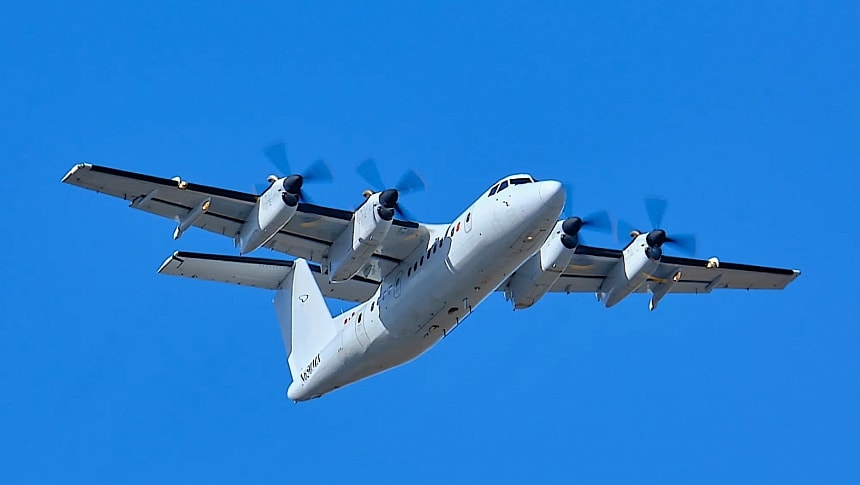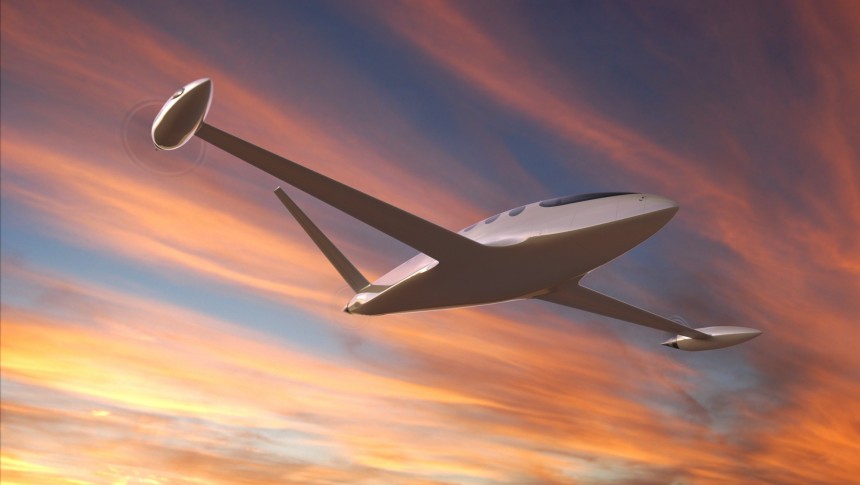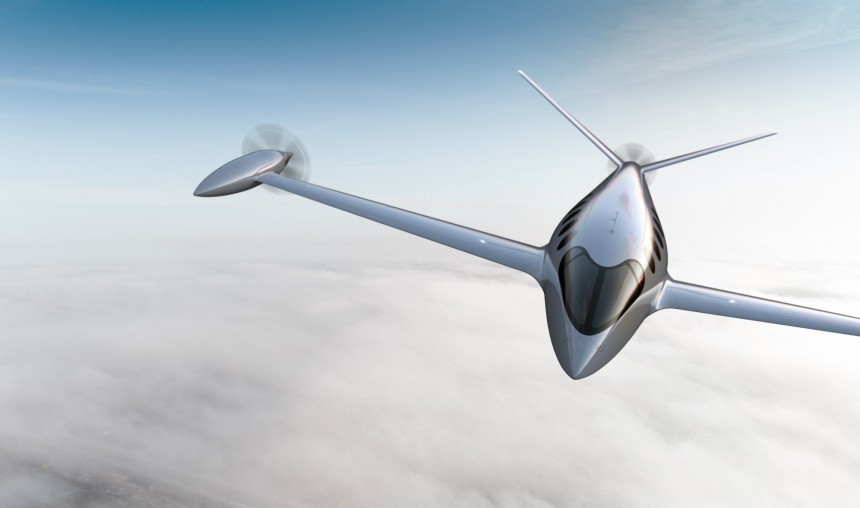The electrification bug is rapidly engulfing pretty much all sides of the world's transportation industry. After spreading like wildfire in automobiles, electrification is now rapidly taking hold in the realm of motorcycles, airplanes, and even boats. And if you were thinking it'll be a long time until you get to fly in an electric aircraft, American space agency NASA has this for you.
The space agency is actively involved in researching new aircraft technologies, and when it comes to electrification it is pretty advanced. At the end of 2021 NASA announced the birth of a program called Electric Powertrain Flight Demonstration (EPFD), an effort meant to develop a hybrid-electric propulsion technology that could be deployed to serve the needs of commercial aviation.
Three years in, the EPFD aims to help interested parties conduct ground and flight tests of these technologies. In the time that has passed since its introduction, the program awarded two contracts worth a combined $253 million to two companies, GE Aviation and magniX USA. Aside from giving these two companies money, NASA is also helping them with development, flight test instrumentation, and data analysis.
It's the latter crew that's of interest to us today, after its engineers put the company's battery-powered aircraft engine through its paces at the NASA Electric Aircraft Testbed (NEAT) facility at the Neil Armstrong Test Facility in Sandusky, Ohio.
NEAT has been created with the goal of simulating every aspect of an aircraft's operation, meaning takeoff, cruise, and landing. The place is simply huge and can accommodate full-blown single-aisle aircraft that can carry as much as 180 passengers, providing testing tools for a variety of systems, including electric motors and generators, control systems, fault management, and power.
The magniX solution that was put through its paces there is technically a hybrid electric propulsion system that relies on conventional turbo-propellor engines working in conjunction with electric motors. Plans are to have the system fly on a De Havilland Dash 7 aircraft sometimes soon, but before that happens there was need to see if everything works as intended.
So the powertrain was taken to the NEAT facility where it could be subjected to simulated altitude flights without it actually leaving the ground.
NASA announced last week that the the first run of these tests on the magniX tech ended back in April, with the engine simulating flght at altitudes of as much as 27,500 feet (8,382 meters) - that's about the average altitude of short-haul flights performed by aircraft today.
The tests were needed, says NASA, because that high up the air is much thinner than on the ground, and the temperatures are higher. As a result, the electric engine's performance could be impacted.
The engine went through a number of procedures that at first aimed to learn more about how temperature and high voltage impact the engine's operation at flight levels. The powerplant's electrical insulation was put through its paces through partial discharge tests, and the thermal management system was put looked at carefully as well.
The April procedures marked the end of the first series of tests for the magniX solution, and more lie on the horizon. The next series is expected to begin as soon as this summer, and it will focus on evaluating the electrified powertrains "under more extreme flight conditions, including higher power levels and temperatures."
When engineers are satisfied everything checks out, the powertrain will be installed on the Dash 7. The plane has already been through baseline flight testing, something that happened at Moses Lake, Washington, in an effort to evaluate it before being modified. Work on it is scheduled to begin shortly, and NASA expects the electrified De Havilland to be in the air sometime in 2026.
The plane will be flown with the goal of demonstrating how a hybrid or electric powertrain used on planes capable of carrying up to 50 passengers could cut down fuel consumption and harmful emissions.
More importantly than that, though, the tests conducted on these systems will help aircraft manufacturers and regulators come up with industry-wide standards and regulations for the new breed of aircraft.
Separately, magniX is also involved in another electric aircraft project run by U.S. startup Eviation. The company's aircraft, called Alice, is planned to use the magni650 solution, a 943-horsepower electric drivetrain. Two of them will go on the Alice, allowing the plane to reach speeds of 299 mph (481 kph).
I said earlier that NASA's EPFD program also includes GE Aerospace. This company has been at it testing its ideas as well, and it completed altitude tests in the NEAT facility in 2022. Sadly, not much news on this front came from GE since then.
GE plans to fly its proposed electrified technology by the middle of the decade, and it will do so on a modified Saab 340B aircraft, powered by GE's CT7-9B turboprop engines.
Three years in, the EPFD aims to help interested parties conduct ground and flight tests of these technologies. In the time that has passed since its introduction, the program awarded two contracts worth a combined $253 million to two companies, GE Aviation and magniX USA. Aside from giving these two companies money, NASA is also helping them with development, flight test instrumentation, and data analysis.
It's the latter crew that's of interest to us today, after its engineers put the company's battery-powered aircraft engine through its paces at the NASA Electric Aircraft Testbed (NEAT) facility at the Neil Armstrong Test Facility in Sandusky, Ohio.
NEAT has been created with the goal of simulating every aspect of an aircraft's operation, meaning takeoff, cruise, and landing. The place is simply huge and can accommodate full-blown single-aisle aircraft that can carry as much as 180 passengers, providing testing tools for a variety of systems, including electric motors and generators, control systems, fault management, and power.
So the powertrain was taken to the NEAT facility where it could be subjected to simulated altitude flights without it actually leaving the ground.
NASA announced last week that the the first run of these tests on the magniX tech ended back in April, with the engine simulating flght at altitudes of as much as 27,500 feet (8,382 meters) - that's about the average altitude of short-haul flights performed by aircraft today.
The tests were needed, says NASA, because that high up the air is much thinner than on the ground, and the temperatures are higher. As a result, the electric engine's performance could be impacted.
The engine went through a number of procedures that at first aimed to learn more about how temperature and high voltage impact the engine's operation at flight levels. The powerplant's electrical insulation was put through its paces through partial discharge tests, and the thermal management system was put looked at carefully as well.
The April procedures marked the end of the first series of tests for the magniX solution, and more lie on the horizon. The next series is expected to begin as soon as this summer, and it will focus on evaluating the electrified powertrains "under more extreme flight conditions, including higher power levels and temperatures."
The plane will be flown with the goal of demonstrating how a hybrid or electric powertrain used on planes capable of carrying up to 50 passengers could cut down fuel consumption and harmful emissions.
More importantly than that, though, the tests conducted on these systems will help aircraft manufacturers and regulators come up with industry-wide standards and regulations for the new breed of aircraft.
Separately, magniX is also involved in another electric aircraft project run by U.S. startup Eviation. The company's aircraft, called Alice, is planned to use the magni650 solution, a 943-horsepower electric drivetrain. Two of them will go on the Alice, allowing the plane to reach speeds of 299 mph (481 kph).
I said earlier that NASA's EPFD program also includes GE Aerospace. This company has been at it testing its ideas as well, and it completed altitude tests in the NEAT facility in 2022. Sadly, not much news on this front came from GE since then.
GE plans to fly its proposed electrified technology by the middle of the decade, and it will do so on a modified Saab 340B aircraft, powered by GE's CT7-9B turboprop engines.
















